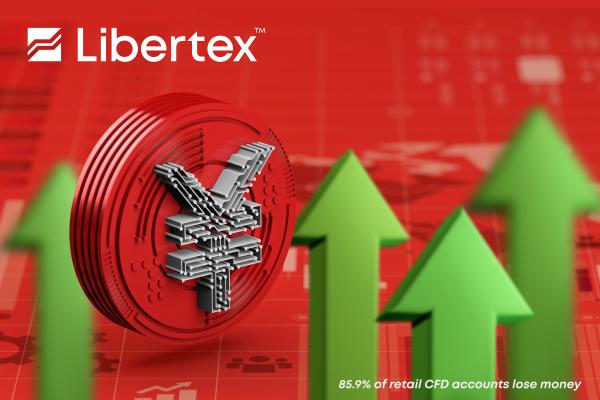After nearly two years of relative normalcy in the world at large, many of us have almost forgotten the pandemic ever happened. As harsh and unprecedented as the lockdowns, travel bans and social distancing measures were at the time, they now seem like a brief and distant memory. For the citizens of mainland China, however, these draconian restrictions were much more intense and long-lasting. We will all remember horror stories from just a few months ago of residents walled up in their multi-story apartment blocks, dead-of-night abductions of non-conformers by quarantine police and even summary executions of family pets. Needless to say, the impact of the Chinese Communist Party's zero-COVID policy on Chinese GDP was catastrophic, with growth of just 3% recorded in 2022 (compared to 6% in 2019). Meanwhile, the US economy has already surpassed its pre-pandemic GDP growth rate by over 0.5%.
But now, after three long years of on-off restrictions, authorities have finally announced an end to their much-maligned zero-COVID policy — to rapturous applause from Chinese citizens and global investors alike. The response from both national statistics data and domestic markets has been extremely positive, as the Q1 2023 GDP figures show above-forecast growth of 4.5%. Among the strongest sectors, as one would expect, are retail sales (+10%) and services (+5.4%), though industrial production also beat analysts' projections to record growth of 3.9% to March. As Goldman Sachs confirms its bullish full-year projection of 6% GDP growth, many investors will be wondering what a resurgent China will mean for both Chinese and world markets.
When the (blue) chips are down
As a result of the pandemic and other regulatory factors, some of China's most prospective and well-established companies have been on a downward spiral for several years. Perhaps the most famous and reputable among these are Baidu, Tencent, and, of course, Alibaba. Since their highs of 2021, these Chinese tech giants saw between 50% and 75% of their share price wiped off. And while not all of this pain can be attributed to lockdowns and restrictions, they certainly haven't helped in generating a recovery.
But now, as retail sales rebound, we are beginning to see the green shoots of new growth emerge. Indeed, Baidu has already seen YTD stock price growth of over 10%, while Baidu and Alibaba have managed to see price increases of 8.5% and 4%, respectively. One can't help but think that if the growth in key sectors like retail and services continues as projected, this will surely benefit the share prices of these major players in Chinese e-commerce and remote services markets. While many Western investors are wisely cautious about investing in mainland companies, China's big tech troika represent a relatively safe and easy way to gain exposure to the Chinese stock market.
Whether the ongoing regulatory uncertainty will keep these stocks subdued remains to be seen. However, the latest comments by the State Administration for Market Regulation (SAMR) suggest the crackdown may be over, with SAMR stating its main focus in 2023 as maintaining the "bottom line of development security" and strengthening its "linkage effect" with international markets.
Beyond the bamboo curtain
While above-target GDP growth in China is clearly a bullish factor for domestic markets, what are the implications for US and European stocks? Well, they say that a rising tide raises all ships and — with China responsible for almost a fifth of global GDP — what's good for Beijing will undoubtedly benefit other economies around the world. However, with much of this post-lockdown growth expected to be limited to private consumption and retail markets, the positive contagion effect is likely to be restrained for the US and Europe.
In a recent report, Fitch Ratings suggested that the largest boom will likely be reaped by those economies that are "more closely integrated with Chinese consumer markets via merchandise trade and tourism". That said, the concurrent strengthening of both the dollar and euro we've seen of late, coupled with a more moderate ramp-up in China's industrial and manufacturing sector, could well see an increase in exports at more competitive prices. The result of this would be lower costs for US and European importers, which would allow them to increase their margins and, thus, profits. It's still early days, but provided that Western central bank policies don't take a more hawkish turn, the knock-on effect for US and European manufacturing stocks could be significant.
Finding the energy
Ask any economist, and they'll tell you: you can't have an economic recovery without large amounts of power. And even amid the renewables boom of recent years, that still means large quantities of oil and gas. Now, it is no secret that Russia and China have solidified relations in the face of rising geopolitical tensions between the Eurasian continent and the West. With Russian oil and gas under severe sanctions and price caps, Putin will be just as happy to provide Urals crude at knockdown prices as Xi will be to receive it.
However, China is a huge industrial powerhouse and its annual consumption for 2023 has been projected at over 11.8 million bpd, a full 1 million bpd higher than Russia's total daily output. Given that Russia also has significant commitments to India and other major industrialised nations, China will have to make up some of the shortfall elsewhere. Consequently, we can expect the prices of Brent and WTI to rise amid rising global demand and supply-side constraints. Furthermore, as Fitch Ratings also notes in the above-mentioned report, a strong rise in LNG demand from Chinese users "could thus interrupt the energy-led disinflation that we forecast this year in Europe, where gas inventories have been rebuilt partly through increasing LNG imports". The end result of this would be higher energy prices for many Europeans that could well continue into the next heating season.
Trade China and the world with Libertex
Regardless of where you think global markets are headed, you'll always be able to have your say with Libertex. With long and short CFD positions available in a wide range of asset classes, from Chinese and US stocks, all the way through to oil, gas and forex, you're sure to find an underlying asset to trade. As China's economy enters recovery mode, Libertex users can trade CFDs in Alibaba, Tencent and Baidu, as well as ETFs like the iShares China Large Cap index. We also offer CFD trading for energy resources, such as Brent and WTI crude oil and even Henry Hub natural gas. For more information or to create an account of your own, visit https://libertex.org/signup






